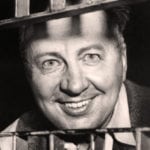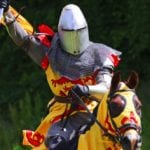 Technology
Technology  Technology
Technology  Humans
Humans 10 Everyday Human Behaviors That Are Actually Survival Instincts
 Animals
Animals 10 Animals That Humiliated and Harmed Historical Leaders
 History
History 10 Most Influential Protests in Modern History
 Creepy
Creepy 10 More Representations of Death from Myth, Legend, and Folktale
 Technology
Technology 10 Scientific Breakthroughs of 2025 That’ll Change Everything
 Our World
Our World 10 Ways Icelandic Culture Makes Other Countries Look Boring
 Misconceptions
Misconceptions 10 Common Misconceptions About the Victorian Era
 Mysteries
Mysteries 10 Strange Unexplained Mysteries of 2025
 Miscellaneous
Miscellaneous 10 of History’s Most Bell-Ringing Finishing Moves
 Technology
Technology Top 10 Everyday Tech Buzzwords That Hide a Darker Past
 Humans
Humans 10 Everyday Human Behaviors That Are Actually Survival Instincts
 Animals
Animals 10 Animals That Humiliated and Harmed Historical Leaders
Who's Behind Listverse?

Jamie Frater
Head Editor
Jamie founded Listverse due to an insatiable desire to share fascinating, obscure, and bizarre facts. He has been a guest speaker on numerous national radio and television stations and is a five time published author.
More About Us History
History 10 Most Influential Protests in Modern History
 Creepy
Creepy 10 More Representations of Death from Myth, Legend, and Folktale
 Technology
Technology 10 Scientific Breakthroughs of 2025 That’ll Change Everything
 Our World
Our World 10 Ways Icelandic Culture Makes Other Countries Look Boring
 Misconceptions
Misconceptions 10 Common Misconceptions About the Victorian Era
 Mysteries
Mysteries 10 Strange Unexplained Mysteries of 2025
 Miscellaneous
Miscellaneous 10 of History’s Most Bell-Ringing Finishing Moves
10 Notorious Medieval Gangsters
When we hear the word “gangster,” we often think of the Bloods and Crips of California or the international cartels that control the drug trade. We don’t think of the middle ages.
But gangs have existed for at least 2,000 years—and probably a lot longer. The gangs of Milo and Clodius were duking it out for control of Rome in 50 BC, and in sixth-century Constantinople, an emperor effectively relied on the backing of either the Blue or Green gang for power: When they both united against Emperor Justinian, they burned half the city to the ground.
Gangs in the middle ages, though, were a more local affair, often run by unscrupulous noble families or ex-soldiers looking for ways to put their skills to use. Since there were no police, people were expected to take the law into their own hands, and it was actually a legal requirement, following the Assize of Arms in 1181, for all freemen in England to own weaponry and an iron helmet.[1] This also made it very easy to turn to a life of mercenary work or outright banditry.
With that in mind, let’s take a look at ten of the most notorious criminal gangsters of the middle ages.
10 The Waraunt Family

Some gangs were just family members working together to survive, and that was the case with the Waraunt family.[2] The Waraunts were a group of four siblings and another male relative who worked together to cheat the justice system, making a small fortune by the standards of their time.
The first record of the Waraunts is an accusation against three of the siblings—Matilda, Margery, and Richard—of receiving stolen goods in 1321, but they avoided punishment. The fourth sibling was again accused later in the year. There’s no way for us to tell how much was stolen in these cases, if anything at all, nor how many other crimes they may have committed that slipped through the net. However, the family were finally caught out when John Waraunt was found guilty of stealing clothes and household items worth eight shillings. The average wage of a laborer in 1331 was three pennies a day, and twelve pennies went into a shilling, so eight shillings was roughly a month’s wages. John Waraunt was hanged.
The rest clearly weren’t deterred, though, because their greatest exploits were yet to come. In 1325, the four remaining Waraunts were all in prison, accused of stealing cloth worth 60 shillings. Despite the instruction for forte et dure (“strong and hard”) punishment, which likely meant torture, they dodged conviction once again when they were put in front of the jury.
They went straight back to it: In 1326, they were acquitted of an accusation of stealing 32 cloths, and just four months later, two of the sisters were accused and acquitted of stealing 40 shillings’ worth of cloth.
Here, the Waraunts drop off the map, having stolen more than a year and a half’s wages worth of stuff and gotten away (mostly) unscathed.
9 Malcolm Musard

The earliest mention of Malcolm Musard is Feb 13, 1296, after he and some friends had been arrested for trespassing in a royal forest while they were heading to join the king’s army in Scotland.[3] He was most likely in his early twenties, and this was the first event in a life spent on the wrong side of the law.
On his father’s death in 1300, Malcolm inherited his lands in Worcestershire, and it wasn’t long before he started selling his sword for profit. In 1304, he and his gang were paid to attack a rectory by the former tenant, something they would make their future careers doing. In the early 1300s, he and his men were accused of “many felonies, robberies and homicides” in Worcestershire and fled the county to escape justice. They can’t have been gone long because by 1316, the king had ordered an investigation into Musard’s “diverse crimes” across both Worcestershire and Warwickshire, though he was pardoned in 1318.
Malcolm was arrested in 1323, ostensibly for aiding the Marcher Lords in their rebellion, but he was released in 1326 and officially pardoned for all outlawry in Worcester. As soon as he was out, he seems to have returned to his old ways because when, in 1327, Isabella deposed the king, she ordered his arrest for theft in Worcestershire and Gloucestershire. He had been released by the time Isabella was removed from power, and Edward III officially pardoned him in 1330.
8 Fulk FitzWarin
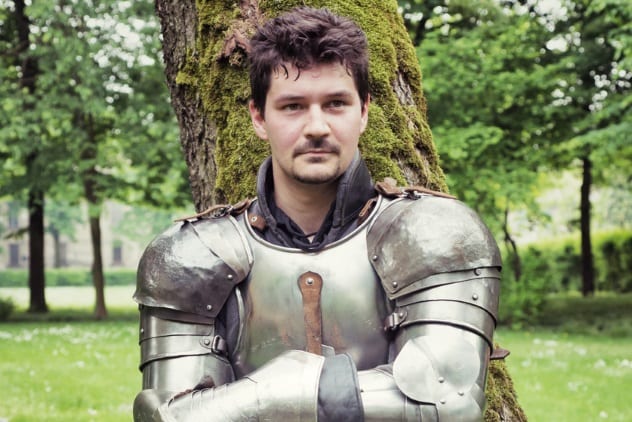
Not all medieval men who ended up living the life of the outlaw did so by choice. Fulk FitzWarin found himself on the wrong side of the king after the latter granted the estate of Whittington to a Welshman instead of Fulk, who had paid £100 for it and whose father had spent his life fighting for it.[4]
Fulk refused to accept the king’s decision, and in 1200, he and his brothers, William, Philip, and John, started a guerilla campaign against the crown, joined by some family tenants and the ambitious young sons of a few knights. They numbered 52 in all. Declared outlaws by the king, they continued their campaign against the kingdom for three years, even in the face of Hubert de Burgh, who the king sent with 100 soldiers to end their rebellion. The king acquiesced in November 1203, paying Fulk 200 marks and giving him the estate of Whittington.
Once his dispute with the king was settled, Fulk happily returned to the life of a normal, landed noble in England and lived until 1258, by which point he must have been extremely old, especially for the time. In his later life, he was evidently well-respected, because the king of England trusted him to mediate disputes and truces in Wales on several occasions after 1230.
7 The Folvilles
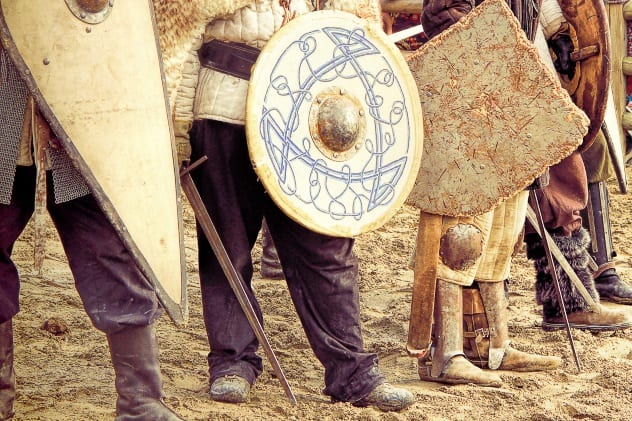
In most cases, only the eldest son of a landowner would stand to inherit any of his property. Any other sons would usually join the retinue of a knight in search of glory and fortune, either in the form of rewards for valor or in ransom money for capturing another noble. Some, however, turned to crime.
As was the case with the Folville family.[5] The eldest son, John Folville, lived the normal life of a landed noble, rarely, if ever, getting involved in the antics of his younger siblings. But the other Folvilles, Eustace, Robert, Walter, and Richard, worked together as a band of violent mercenaries. They frequently operated outside the law (or took it into their own hands), especially when their family was at stake. For example, in 1326, when Roger de Beler, the Baron of the Exchequer, made threats against the Folvilles, Eustace led a band of 50 men and captured and killed him on the road. A warrant was issued for their arrest, and they fled to join Queen Isabella’s army on the continent, where they were mustering to depose the king. The Folvilles fought in the queen’s army, and when she successfully seized the kingdom, they were pardoned.
On their return to England, they worked as a band of thugs for hire, committing acts of violence on behalf of people who wanted to keep their reputation. They first targeted the lands of de Beler, who had wronged them in the past, but were also roaming the country openly armed and holding travelers on the road for ransom.
After stealing animals from the estate of Henry de Beaumont, they were once again wanted for arrest, this time by the corrupt judge Richard Willoughby. However, rather than acquiesce to imprisonment, they captured the judge and ransomed him for 1,300 marks (a ludicrous amount of money at the time). The capture of a royal representative was unprecedented, and they were wanted men. However, they allied themselves with the infamous Coterel gang and together roamed Derbyshire openly armed, causing trouble and threatening travelers.
Fortunately for them, Edward III was at war and in serious need of warriors. He didn’t have the means to confront the gangsters, but he could put them to work. The Folvilles happily signed up for the English army and fought for Edward against the Scots through 1337 and 1338, receiving a full pardon in return.
They never served any punishment for their crimes.
6 John Fitzwalter

John Fitzwalter, a powerful Essex man and close relative of the esteemed de Clare family, is the embodiment of medieval noble privilege.[6] He effectively treated Essex as his own personal kingdom and was too strong to be brought to justice by the king.
He first appears on record as being part of a gang who broke into the park of John de Seagrave, hunting and taking his animals and causing damage in 1340. It wasn’t long before he was terrorizing Essex with a gang of his own, engaging in cattle-rustling and extortion and taking goods from merchants without paying. He frequently refused to pay back any debts or rents he owed. Because of his power and influence, even royal justices simply refused to bring cases against him.
Things came to a head when men from Colchester broke into one of his parks, looted and damaged it, and killed one of his men (probably in retaliation for his abusive behavior). Fitzwalter brought all the force he could muster against the town, taking legal action, fixing juries against them (and assaulting jurors who didn’t support him), and besieging the town, preventing people from entering or leaving. He and his gangsters even armed themselves with wooden beams from the houses they destroyed and threatened passersby.
Justice finally caught up with him in 1351, when the king ordered a Commission of the Peace to investigate his crimes. The king issued an arrest warrant, and Fitzwalter was held in the Tower of London for a year, his entire estate confiscated. However, he was eventually freed and issued with a royal pardon. He was ordered to pay a fine of £847, an amount so large that most lower knights wouldn’t earn that in a lifetime.
His criminal activities end there. He dutifully paid his fine in annual increments until his death ten years later.
5 The Despensers
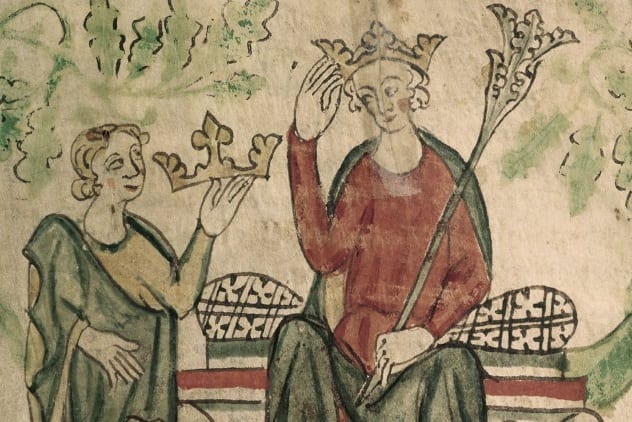
The Despensers were worse than ordinary thuggish medieval criminals. They were cunning and ambitious, and at the height of their power, they even had control over the king of England. They used their positions of trust in the royal court to bully and usurp people out of their money and lands until they were the most powerful men in England. It took a civil war to break their grip on the kingdom.[7]
In 1317, Hugh Despenser the Younger was chosen to be the royal chamberlain, an extremely powerful position because the chamberlain controlled access to the king. Edward II was known for having favorites, and Hugh ingratiated himself with the king. By 1320, he was Edward’s closest confidant (other than his wife, Isabella). Now that his position was secure, he began manipulating the king and the power he held to extort peoples’ lands and titles from them at a staggering rate.
Despenser alarmed the other nobles to such an extent that by 1321, the kingdom was in open civil war, with those on the rebel side demanding restrictions on royal power and the removal of Despenser. Unfortunately for them, they were crushed at the Battle of Boroughbridge, opening the door to four years of unrestricted royal (and therefore Despenser) rule.
Hugh Despenser and his father systematically abused royal power to seize the lands of other landholders, often by imprisoning them until they agreed to give up the charter. They also twisted the king’s opinion against their own great enemies, Roger Mortimer, Damory, and Audley, and directed royal power against them, cementing their own power. They also controlled the king completely, not allowing him to meet with anyone else, even his wife, unless one of them was also present.
The corruption of the Despensers turned the whole kingdom against them and infected the monarchy so thoroughly that when the king’s wife, Isabella, landed in England with an army (after unsuccessfully asking Edward to get rid of the Despensers) Edward’s reign ended with theirs. The only people who stood with the king in the end were the Despensers and their allies, and within two months of Isabella’s arrival, he and the Despensers had been caught and imprisoned.
The elder Despenser was cut into pieces and fed to dogs, while Hugh was hanged from 15 meters (50 ft) while being forced to wear his own coat of arms turned upside down and then castrated and disemboweled.
4 Adam The Leper

Many bandit groups plagued rural areas, but towns and cities could also be the haunt of the medieval gangster. On page 245 of A History of Crime in England, there is a record of the exploits of a gang leader called “Adam the Leper.”[8]
A trader who worked for Queen Philippa of Hainault, the wife of Edward III, was holding some jewels on her behalf in his house in London. Adam the Leper, whose gang operated in the area, somehow discovered that he had the jewels and led the gang to the trader’s house after dark, barricading him in and demanding that he hand over the jewels. When the merchant refused, the gangsters set fire to the house and burned it down, seizing the treasure anyway.
Not much else is known about Adam the Leper, except that he seems to have escaped punishment and lived another 20 years. It’s likely he was the head of an urban street gang who were used to pulling heists like this, the majority of which went unrecorded because they didn’t directly involve important nobles or royalty.
3 Roger Godberd (c. 1245–1276)

Roger Godberd is one of the people thought to be the inspiration behind the Robin Hood legend. In some ways, he certainly fits the bill, operating as an outlaw around Sherwood Forest and being caught and imprisoned by the Sheriff of Nottingham. In many ways, however, he is very unlike the Robin Hood of myth.[9]
One of the earliest accounts featuring Roger is a court case in which he is accused of unlawfully assaulting one of his tenants. According to the court, he’d given Jordan le Fleming a ten-year tenancy at his manor in Swaninton but forcibly ejected him after just a year, taking some of le Fleming’s belongings as he did. He was accused of poaching venison in Sherwood Forest in 1264. Two years later, in 1266, he appears again, this time taking a charter (a deed for land) at swordpoint from the convent at Garendon, which he appears to have been renting to them, and then forcing them to sign a document forgiving him for doing so. Later that year, however, he was granted a pardon by the king for all his past crimes, apparently for his “good behaviour.”
Whatever the king’s reason for pardoning Roger was, it was clearly misplaced, since he was accused of committing a robbery in 1270. By this time, he was apparently the leader of a band of outlaws who lived around Sherwood Forest. He was imprisoned in Nottingham Castle but seems to have escaped with the help of a knight named Richard Folyot, who was harboring Roger and his men.
Roger, who was called the leader of outlaws in Leicester, Nottingham, and Wiltshire by Reginald de Grey, the Sheriff of Nottingham at the time, was imprisoned at Bridgnorth Castle in 1272 and put on trial in 1275, where he tried to defend himself by showing them the royal pardon he’d received nearly a decade earlier and arguing that he’d committed no crime since. Whether this worked or not is unknown, as some accounts say he died in prison the next year, while others suggest he went free and lived for as long as two decades more.
2 The Coterels

In many ways, the Coterels were similar to the Folvilles, operating at the same time and in roughly the same area as them—both gangs worked together in the kidnapping and ransoming of Richard Willoughby, the royal judge sent to convict them.[10]
Led by James Coterel and his brothers, Nicholas and John, they were likely the sons of Ralph Coterel, who owned land in Derbyshire. They first appear fighting in the army of the Earl of Lancaster during his 1322 rebellion against the king. King Edward II lost authority in the region in the final years of his reign, which gave the gang room to grow. Protected by the priors of Lichfield, they were effectively untouchable: By 1330, they’d even raided one of the estates of Henry Lancaster, who was one of the most powerful men in the kingdom and a relative of the king, and they were wanted for murder. They’d already formed an association of criminals which operated across much of Derbyshire and Nottinghamshire, involved in systematic extortion and robbery.
Unusually, they also enjoyed the protection of Queen Philippa, who helped James Coterel buy his own land in 1332, at the height of their criminal activities. The royal commission which was ordered to investigate their crimes was cut off suddenly when war broke out between England and Scotland, and in 1338, the Coterels were included on a summons to join the royal army in Flanders.
The Coterels happily took up the opportunity to join the king’s army and turned away from their lives of crime. They were officially pardoned for their crimes in 1351, by which time James was acting as tax collector for Lenton priory, and his brother Nicholas was a royal bailiff.
The date of James Coterel’s death is ultimately unknown, but the last record mentioning him reveals that he owed over £100 to the Folville gang.
1 Johnnie Armstrong
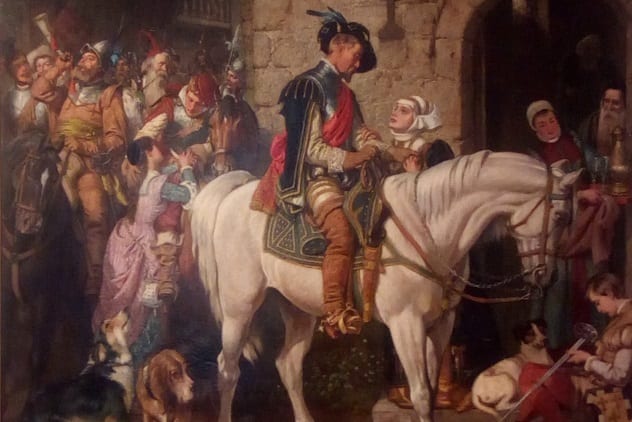
The raider and nobleman John Armstrong—known as Johnnie in the ballad written about him after his death—was a bandit and gang leader. Armstrong held two forts in the debatable land that lay between England and Scotland and used these as a base to harass and ransack settlements in both Northern England and Southern Scotland for ten years between 1520 and 1530. He and his organized gang extorted villages and towns unable to protect themselves and made off with their animals and belongings (or just burned their houses down) when they refused to pay.[11]
Though he had an extensive criminal record, he was officially a vassal of the Scottish lord of the West March, Lord Maxwell, who refused to punish him for his acts when asked to by the English wardens. The English Lord Dacre eventually took matters into his own hands, leading an army to burn Armstrong’s property at Cannonby.
Through political pressure, the English persuaded Lord Angus to declare Johnnie and his band outlaws, though Angus’s efforts to raise an army to oust him failed when he struggled to find volunteers.
Fortune turned against Armstrong in 1530, when James V became king of Scotland. He was determined to rid the countryside of bandits, and he tricked Armstrong into meeting him. The king hanged Armstrong and his 24 followers, refusing Armstrong’s pleas for mercy, even after Armstrong said he’d make all the men in Northern England pay their yearly rent to him.
Read more spellbinding tales of medieval outlaws on 10 Swashbuckling Mercenaries Who Ravaged Medieval Europe and 10 Notorious Rogues Who Terrorized Medieval Europe.

